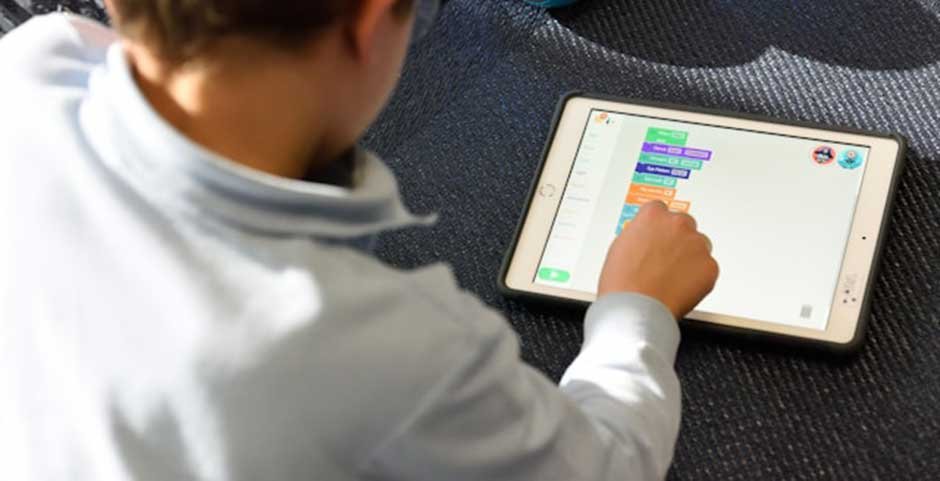In the modern electronic world, technology greatly influences how children learn and develop. To the fullest extent possible, children’s potential must be realized via efficient use of technology. These five tactics will assist you in making the most of educational possibilities and fostering kids’ development in this digital age.
1. Integrating Educational Apps
Apps for education provide engaging learning opportunities in a range of topics and abilities. These applications help kids learn effectively and enjoyably by gamifying lessons, using quizzes and multimedia material. Including instructional applications in everyday activities enhances lessons learned in the classroom and promotes independent study. Learning at their speed and going over difficult material again is made possible by educational applications that are made to accommodate a variety of learning preferences and styles. Additionally, they offer immediate feedback that helps dispel misunderstandings and encourage learning. Through the use of educational applications, instructors and parents may augment their kids’ interaction with learning materials outside conventional classroom environments, encouraging ongoing education and expertise growth.
2. Digital Citizenship Education
Children who get digital citizenship education learn how to utilize technology responsibly and safely. It addresses issues including digital privacy, cyberbullying avoidance, and online etiquette. Children who are aware of digital citizenship are better able to behave properly online, foster meaningful relationships, and safeguard personal data. It highlights how crucial it is to treat others with respect while interacting online, be aware of one’s digital imprint, and comprehend the repercussions of one’s actions. This instruction gives kids the power to use digital tools and platforms wisely by fostering digital literacy and awareness. A culture of responsible digital conduct is fostered by including digital citizenship in the curriculum, which helps kids succeed in a connected world while protecting their online presence.
3. Balancing Screen Time
In order to avoid overexposure and guarantee that digital devices are used productively, screen time management is essential. Give kids precise rules on when and how much time they may spend using technology for socializing, pleasure, and learning. To monitor and control their actions properly while protecting their privacy and safety, think about integrating technologies such as a Chromebook monitoring software. Finding a good balance between digital and offline activities is necessary to improve kids’ overall well-being when it comes to screen time. Limiting screen time helps kids explore different hobbies and learn non-digital skills. Alongside digital learning, it’s critical to give priority to activities that encourage movement, social contact, and creative expression. Parents may examine use trends, spot any issues, and start productive discussions about sensible screen time practices by using monitoring software.
4. Adaptive Assessments
Adaptive assessments make use of technology to measure progress and offer real-time feedback precisely. These evaluations ensure that challenges are suitable by adjusting difficulty in response to children’s replies. Personalized learning plans are guided by adaptive assessments, which pinpoint areas of strength and progress to maximize educational achievements. Adaptive assessments, which use technology to customize learning experiences to meet individual requirements, are a major improvement in education. These evaluations maintain student engagement and motivation by dynamically altering difficulty levels in response to children’s performance. They give teachers fast feedback, enabling them to identify the precise areas in which kids thrive or need more assistance. In the end, by providing insights into each child’s learning path and enabling focused interventions to improve overall academic attainment, adaptive evaluations support more effective teaching practices.
5. Supporting Digital Literacy Skills
Digital literacy abilities include the capacity to locate, assess, and use information efficiently on the internet. Children who are taught how to use internet resources will be more equipped to do independent research and recognize reliable sources. Children who acquire digital literacy are better prepared for both academic performance and lifetime learning in the digital age. Encouraging youngsters to develop digital literacy skills is crucial to preparing them for the intricacies of the contemporary information world. Teachers and parents may support youngsters in making responsible use of the huge diversity of internet information by stressing critical thinking and judgment. Their capacity to interact sensibly with digital platforms is improved by hands-on activities that teach them how to assess online material and comprehend digital footprints. Additionally, encouraging children to use technology for learning and creative expression while protecting their privacy is another benefit of promoting a proactive approach to digital literacy.
Conclusion
You may use technology wisely to help kids reach their full potential in the digital age by putting these tips into practice. Personalized learning pathways, educational applications, collaborative tools, adaptive assessments, digital literacy, and teaching on digital citizenship are all crucial elements. Using these techniques gives kids the information and abilities they need to succeed in a world where technology is everything.






